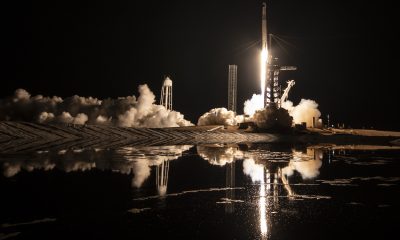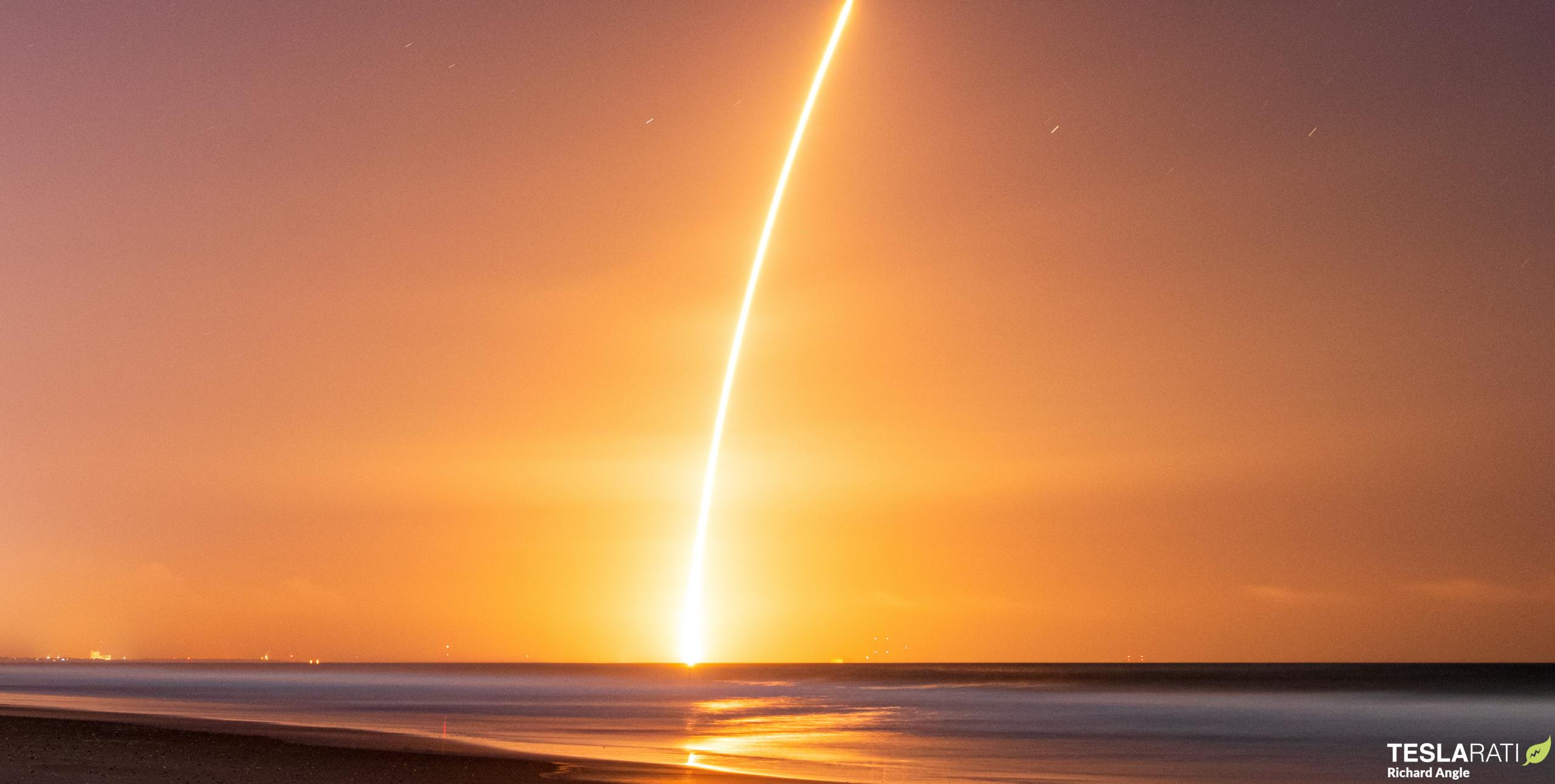

News
SpaceX launches Japanese lander, NASA cubesat to the Moon
A SpaceX Falcon 9 rocket has successfully launched a privately-developed Japanese Moon lander and a NASA Jet Propulsion Laboratory cubesat on their way to lunar orbit.
Following five back-to-back delays that pushed the launch from November to mid-December, Falcon 9 lifted off with Japanese startup ispace’s first HAKUTO-R Moon lander on December 11th, kicking off a multi-month journey that will take the spacecraft more than 700,000 miles (1.1M km) away from Earth. It’s not the first time SpaceX has launched a mostly commercial Moon lander, and it won’t be the last. SpaceX’s first Moon lander launch happened in February 2019, when Falcon 9 launched Israeli company SpaceIL’s Beresheet Moon lander as a rideshare payload on Indonesia’s PSN-6 geostationary communications satellite. Beresheet failed just a minute or two before touchdown, but the attempt was still a historic step for commercial spaceflight.
Just shy of three years later, SpaceX has launched another private Moon lander. Unlike Beresheet, which made its way to the Moon from geostationary transfer orbit (GTO), HAKUTO-R was Falcon 9’s main payload, allowing the rocket to launch it directly into deep space. A Jet Propulsion Laboratory (JPL) cubesat that missed a long-planned ride on NASA’s first Space Launch System (SLS) rocket also joined the Moon lander as a Falcon 9 rideshare payload.
The update that's rolling out to the fleet makes full use of the front and rear steering travel to minimize turning circle. In this case a reduction of 1.6 feet just over the air— Wes (@wmorrill3) April 16, 2024
Approximately four months from now, both spacecraft will reach the end of similar low-energy ballistic transfer trajectories, at which point they will have limited opportunities to enter lunar orbit and continue their missions. Reaching that checkpoint will require several successful orbital correction maneuvers and enough longevity to survive months in deep space, unprotected by Earth’s magnetic fields.
If they make it that far, HAKUTO-R will conduct several more burns to reach low lunar orbit (LLO), where ispace will verify the spacecraft’s health and eventually attempt a soft landing on the Moon. A privately-developed spacecraft has never landed on an extraterrestrial body, so the prestige at stake is about as high as it can get. If JPL’s Lunar Flashlight spacecraft [PDF] survives its journey, it will enter a near-rectilinear halo orbit around a point of gravitational equilibrium (Lagrange point) between the Earth and Moon. Once on station, it will spend most of its time 9000 kilometers (~5600 mi) away from the Moon but occasionally fly within 15 kilometers (~9 mi) of the surface. Under JPL’s nominal mission plan, Lunar Flashlight will complete at least ten week-long orbits and use an infrared laser instrument to search for water ice in permanently-shadowed Moon craters during each close approach.
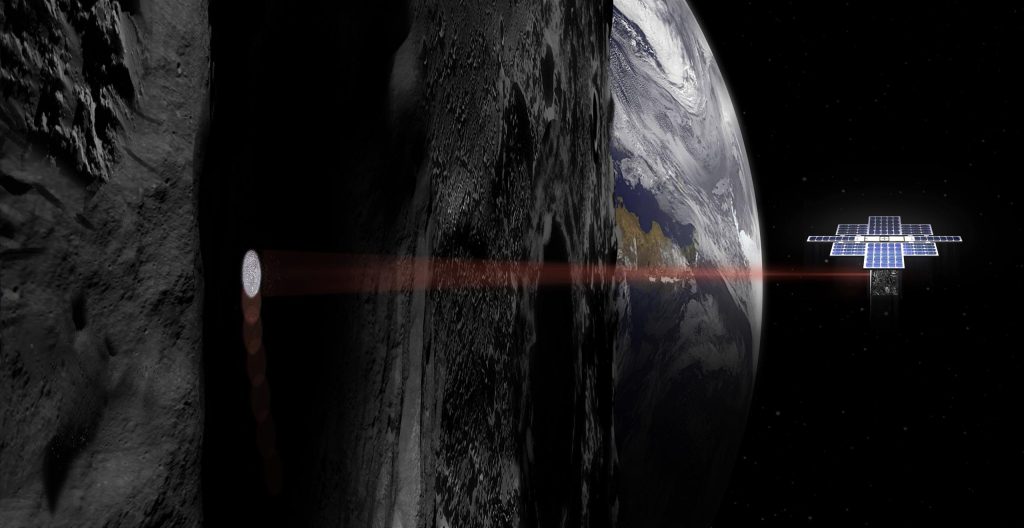
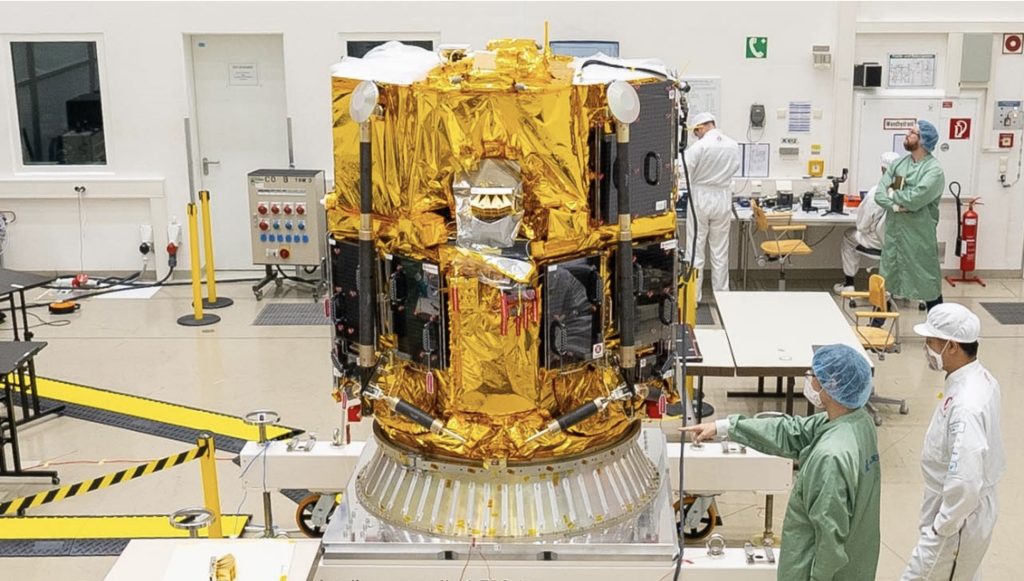
Without context, both missions seem to complement each other well, and it’s not hard to imagine an alternative scenario where a cubesat like Lunar Flashlight was intentionally included to prospect for ice that a lander could then target. But the JPL cubesat’s presence on ispace’s HAKUTO-R was purely by accident. Because of certain design decisions made by NASA’s Space Launch System (SLS) rocket and Orion spacecraft contractors, the giant rocket is intended to launch cubesat rideshare payloads to the Moon, but those satellites are barely accessible for the entire time the rocket is configured for its unprecedentedly slow launch campaigns.
As a result, even though SLS lifted off for the first time in November 2022, its cubesat payloads had to be ready for launch and installed on the rocket in October 2021. Out of 14 planned payloads, four – including Lunar Flashlight – weren’t ready in time, forcing them to find other ways to deep space. Ironically, that may have been an unexpected blessing, as the ten payloads that did make the deadline wound up sitting inside SLS for 13 months, much of which was spent at the launch pad. Half of those satellites appear to have partially or completely failed shortly after launch.
Because of the extremely circuitous path the NASA rocket ultimately took to reach launch readiness, JPL was able to find a new ride to the Moon and launch less than one month after SLS and its co-passengers. Unlike those copassengers, Lunar Flashlight likely spent just a few weeks installed on Falcon 9 before launching to the Moon. Additionally, the SLS launch trajectory took it more or less directly to the Moon, giving its rideshare payloads just a handful of days to troubleshoot any problems discovered. Thanks to the slower, more efficient transfer orbit SpaceX used to launch HAKUTO-R, JPL should still have opportunities to enter a nominal orbit even if Lunar Flashlight requires weeks of in-space troubleshooting – far more margin for error than most SLS copassengers received.

Lunar Flashlight weighs about 14 kilograms (~31 lb) at liftoff, features two sets of solar arrays, and packs a first-of-its-kind chemical propulsion system designed to deliver up to 290 m/s of delta-V – a ton of performance for such a small satellite. HAKUTO-R weighs closer to 1.1 tons (~2400 lb) and is a far more capable spacecraft, in theory – a necessity to land softly on the Moon. At ispace’s request, Falcon 9’s low-energy ballistic transfer orbit reduced the lander’s performance requirements, but it will need roughly 2000-2500 m/s of delta-V to enter lunar orbit and land on the lunar surface.
On December 12th, ispace confirmed that HAKUTO-R is in excellent shape around 24 hours after liftoff. ispace says the lander has secured stable communications, a stable orientation in space, and positive power generation from its solar arrays. An ispace infographic indicates that the spacecraft will enter lunar orbit around mid-April if all goes to plan. With HAKUTO-R in a stable state, the next most important near-term milestone will be the successful use of its propulsion and navigation systems. The startup hopes to demonstrate smooth deep space operations, including routine trajectory correction maneuvers, within one month of launch.
HAKUTO-R was SpaceX’s 56th successful launch of 2022 and the company’s second direct Moon launch this year after sending South Korea’s KPLO orbiter to the Moon in August.
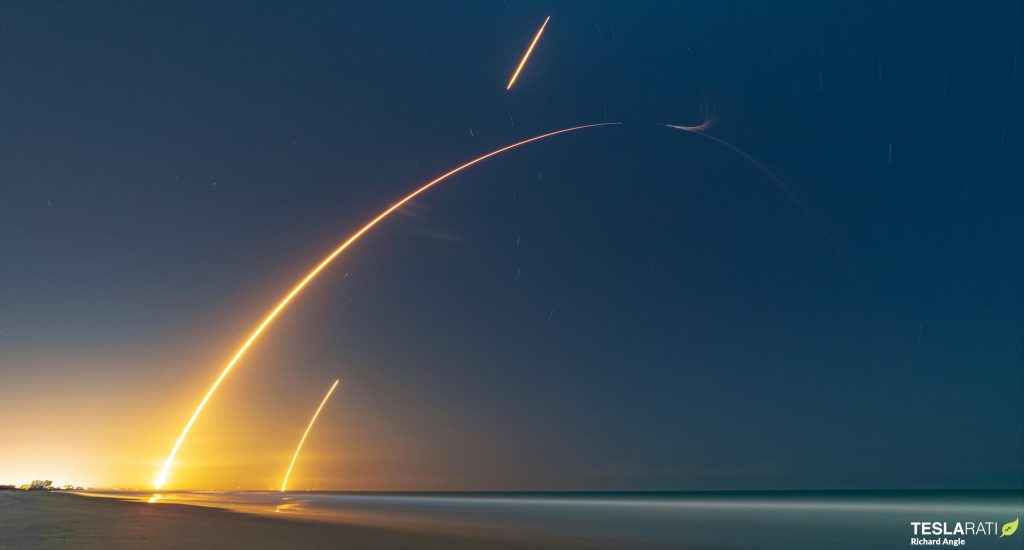
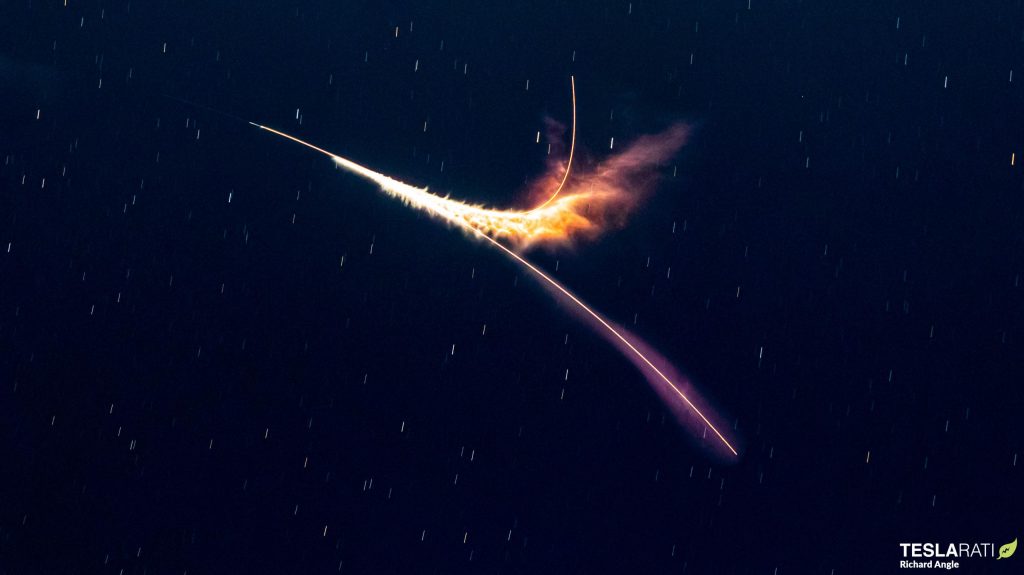
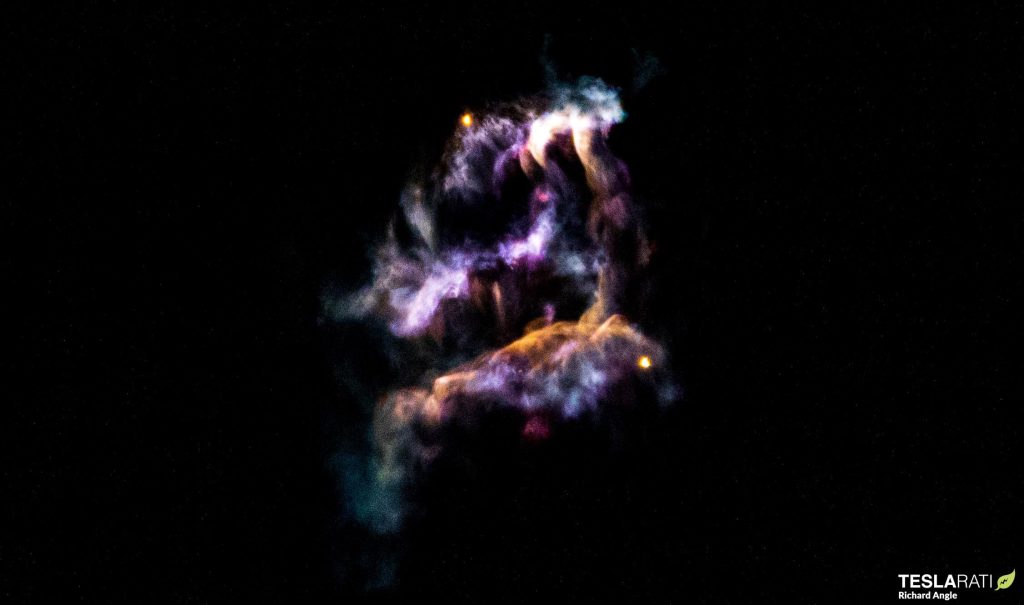
News
Tesla begins Robotaxi certification push in Arizona: report
Tesla seems serious about expanding its Robotaxi service to several states in the coming months.

Tesla has initiated discussions with Arizona transportation regulators to certify its driverless Robotaxi service in the state, as per a recent report from Bloomberg News. The move follows Tesla’s launch of its Robotaxi pilot program in Austin, Texas, as well as CEO Elon Musk’s recent comments about the service’s expansion in the Bay Area.
The Arizona Department of Transportation confirmed to Bloomberg that Tesla has reached out to begin the certification process for autonomous ride-sharing operations in the state. While details remain limited, the outreach suggests that Tesla is serious about expanding its driverless Robotaxi service to several territories in the coming months.
The Arizona development comes as Tesla prepares to expand its service area in Austin this weekend, as per CEO Elon Musk in a post on X. Musk also stated that Tesla is targeting the San Francisco Bay Area as its next major market, with a potential launch “in a month or two,” pending regulatory approvals.
Tesla first launched its autonomous ride-hailing program on June 22 in Austin with a small fleet of Model Y vehicles, accompanied by a Tesla employee in the passenger seat to monitor safety. While still classified as a test, Musk has said the program will expand to about 1,000 vehicles in the coming months. Tesla will later upgrade its Robotaxi fleet with the Cyercab, a two-seater that is designed without a steering wheel.
Sightings of Cybercab castings around the Giga Texas complex suggests that Tesla may be ramping the initial trial production of the self-driving two-seater. Tesla, for its part, has noted in the past that volume production of the Cybercab is expected to start sometime next year.
In California, Tesla has already applied for a transportation charter-party carrier permit from the state’s Public Utilities Commission. The company is reportedly taking a phased approach to operating in California, with the Robotaxi service starting with pre-arranged rides for employees in vehicles with safety drivers.
News
Tesla sets November 6 date for 2025 Annual Shareholder Meeting
The automaker announced the date on Thursday in a Form 8-K.
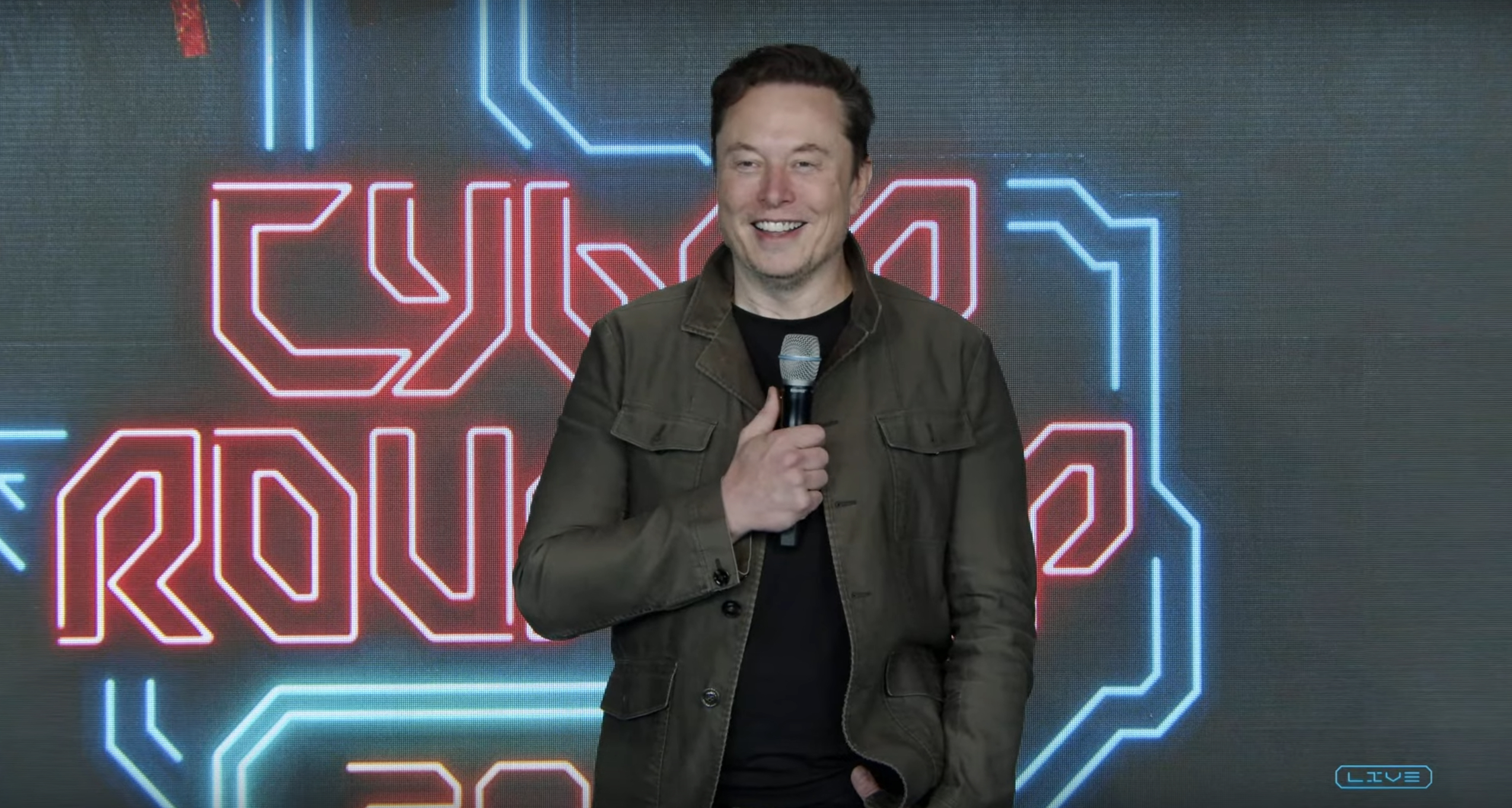
Tesla has scheduled its 2025 annual shareholder meeting for November 6, addressing investor concerns that the company was nearing a legal deadline to hold the event.
The automaker announced the date on Thursday in a Form 8-K submitted to the United States Securities and Exchange Commission (SEC). The company also listed a new proposal submission deadline of July 31 for items to be included in the proxy statement.
Tesla’s announcement followed calls from a group of 27 shareholders, including the leaders of large public pension funds, which urged Tesla’s board to formally set the meeting date, as noted in a report from The Wall Street Journal.
The group noted that under Texas law, where Tesla is now incorporated, companies must hold annual meetings within 13 months of the last one if requested by shareholders. Tesla’s previous annual shareholder meeting was held on June 13, 2024, which placed the July 13 deadline in focus.
Tesla originally stated in its 2024 annual report that it would file its proxy statement by the end of April. However, an amended filing on April 30 indicated that the Board of Directors had not yet finalized a meeting date, at least at the time.
The April filing also confirmed that Tesla’s board had formed a special committee to evaluate certain matters related to CEO Elon Musk’s compensation plan. Musk’s CEO performance award remains at the center of a lengthy legal dispute in Delaware, Tesla’s former state of incorporation.
Due to the aftermath of Musk’s legal dispute about his compensation plan in Delaware, he has not been paid for his work at Tesla for several years. Musk, for his part, has noted that he is more concerned about his voting stake in Tesla than his actual salary.
At last year’s annual meeting, TSLA shareholders voted to reapprove Elon Musk’s compensation plan and ratified Tesla’s decision to relocate its legal domicile from Delaware to Texas.
Elon Musk
Grok coming to Tesla vehicles next week “at the latest:” Elon Musk
Grok’s rollout to Tesla vehicles is expected to begin next week at the latest.
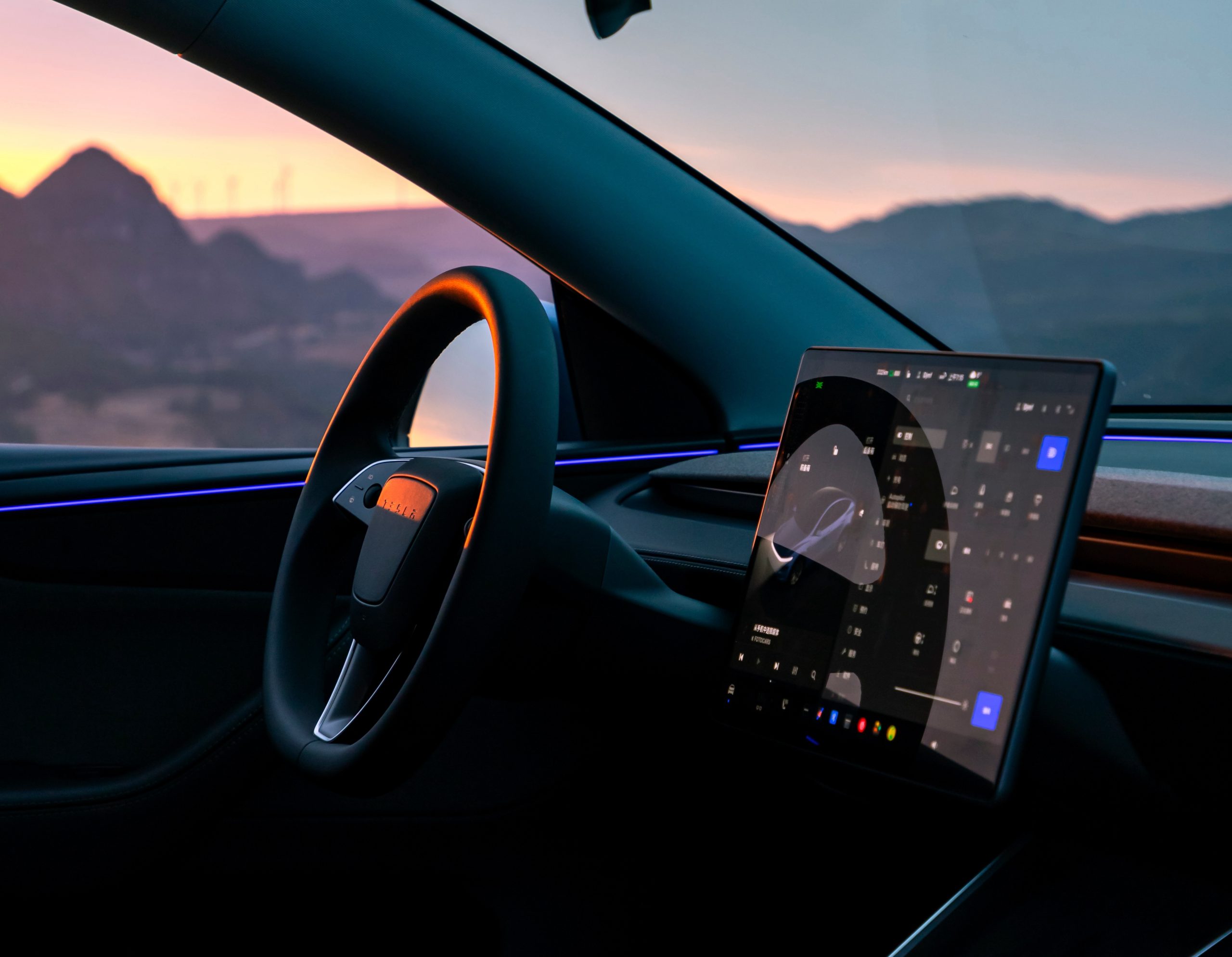
Elon Musk announced on Thursday that Grok, the large language model developed by his startup xAI, will soon be available in Tesla vehicles. Grok’s rollout to Tesla vehicles is expected to begin next week at the latest, further deepening the ties between the two Elon Musk-led companies.
Tesla–xAI synergy
Musk confirmed the news on X shortly after livestreaming the release of Grok 4, xAI’s latest large language model. “Grok is coming to Tesla vehicles very soon. Next week at the latest,” Musk wrote in a post on social media platform X.
During the livestream, Musk and several members of the xAI team highlighted several upgrades to Grok 4’s voice capabilities and performance metrics, positioning the LLM as competitive with top-tier models from OpenAI and Google.
The in-vehicle integration of Grok marks a new chapter in Tesla’s AI development. While Tesla has long relied on in-house systems for autonomous driving and energy optimization, Grok’s integration would introduce conversational AI directly into its vehicles’ user experience. This integration could potentially improve customer interaction inside Tesla vehicles.
xAI and Tesla’s collaborative footprint
Grok’s upcoming rollout to Tesla vehicles adds to a growing business relationship between Tesla and xAI. Earlier this year, Tesla disclosed that it generated $198.3 million in revenue from commercial, consulting, and support agreements with xAI, as noted in a report from Bloomberg News. A large portion of that amount, however, came from the sale of Megapack energy storage systems to the artificial intelligence startup.
In July 2023, Musk polled X users about whether Tesla should invest $5 billion in xAI. While no formal investment has been made so far, 68% of poll participants voted yes, and Musk has since stated that the idea would be discussed with Tesla’s board.
-

 Elon Musk1 week ago
Elon Musk1 week agoTesla investors will be shocked by Jim Cramer’s latest assessment
-

 Elon Musk20 hours ago
Elon Musk20 hours agoxAI launches Grok 4 with new $300/month SuperGrok Heavy subscription
-

 Elon Musk3 days ago
Elon Musk3 days agoElon Musk confirms Grok 4 launch on July 9 with livestream event
-

 News7 days ago
News7 days agoTesla Model 3 ranks as the safest new car in Europe for 2025, per Euro NCAP tests
-
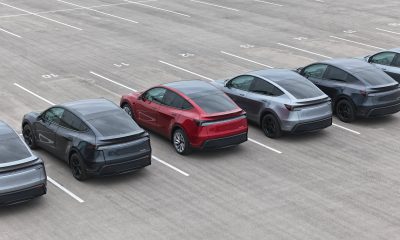
 Elon Musk2 weeks ago
Elon Musk2 weeks agoA Tesla just delivered itself to a customer autonomously, Elon Musk confirms
-

 Elon Musk1 week ago
Elon Musk1 week agoxAI’s Memphis data center receives air permit despite community criticism
-
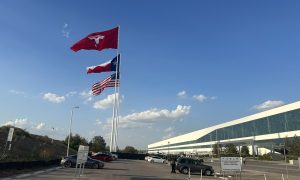
 Elon Musk2 weeks ago
Elon Musk2 weeks agoTesla’s Omead Afshar, known as Elon Musk’s right-hand man, leaves company: reports
-

 News2 weeks ago
News2 weeks agoXiaomi CEO congratulates Tesla on first FSD delivery: “We have to continue learning!”


